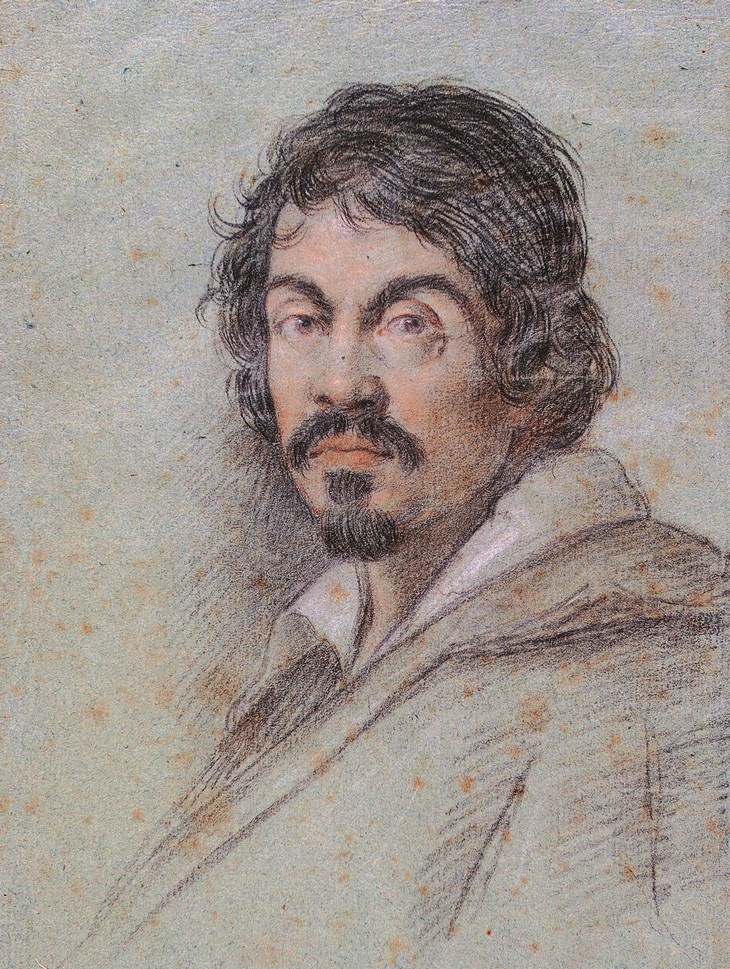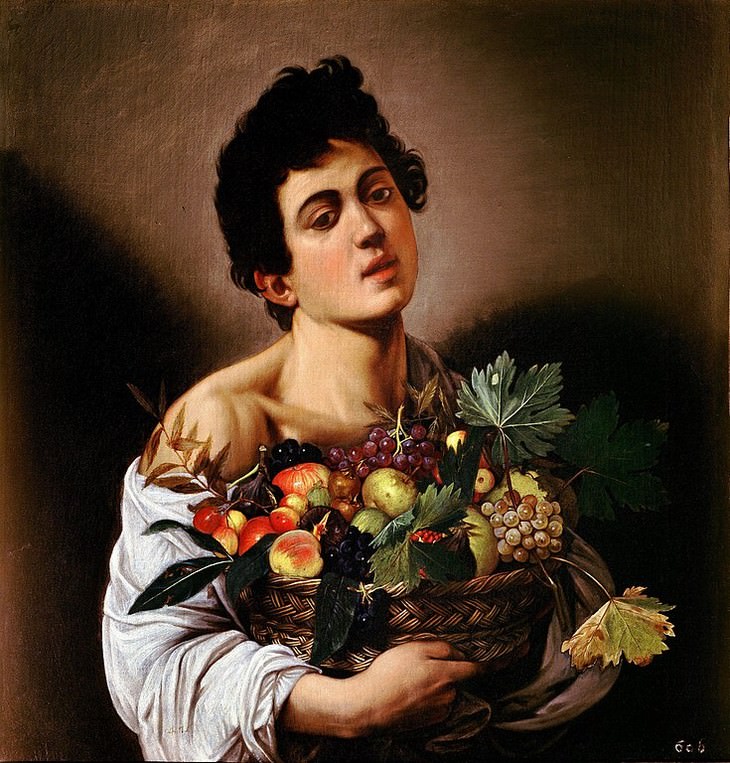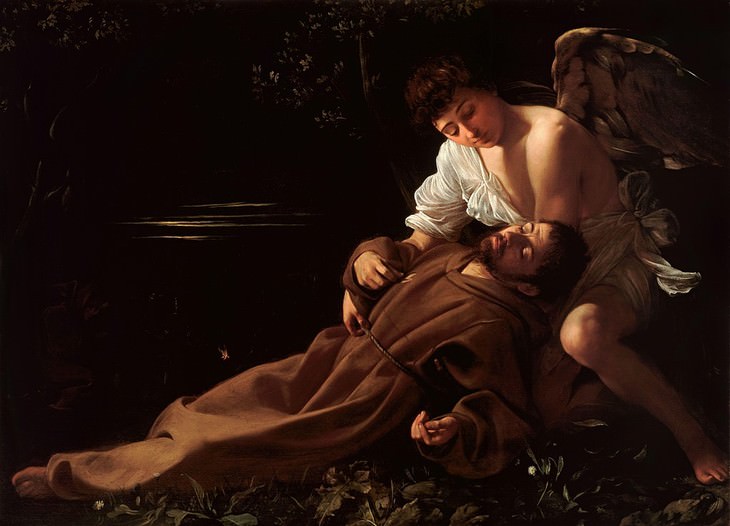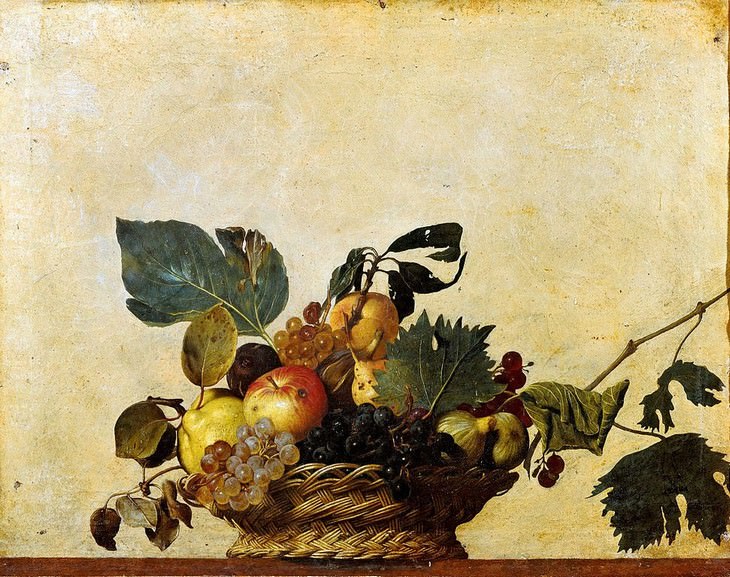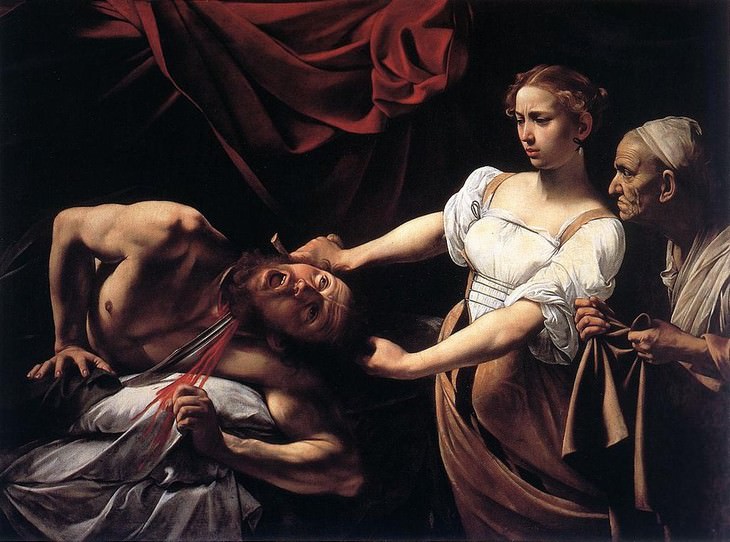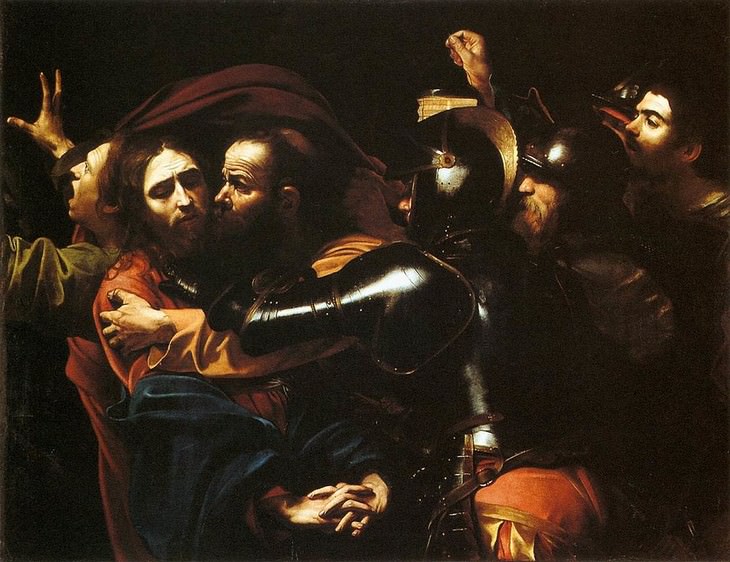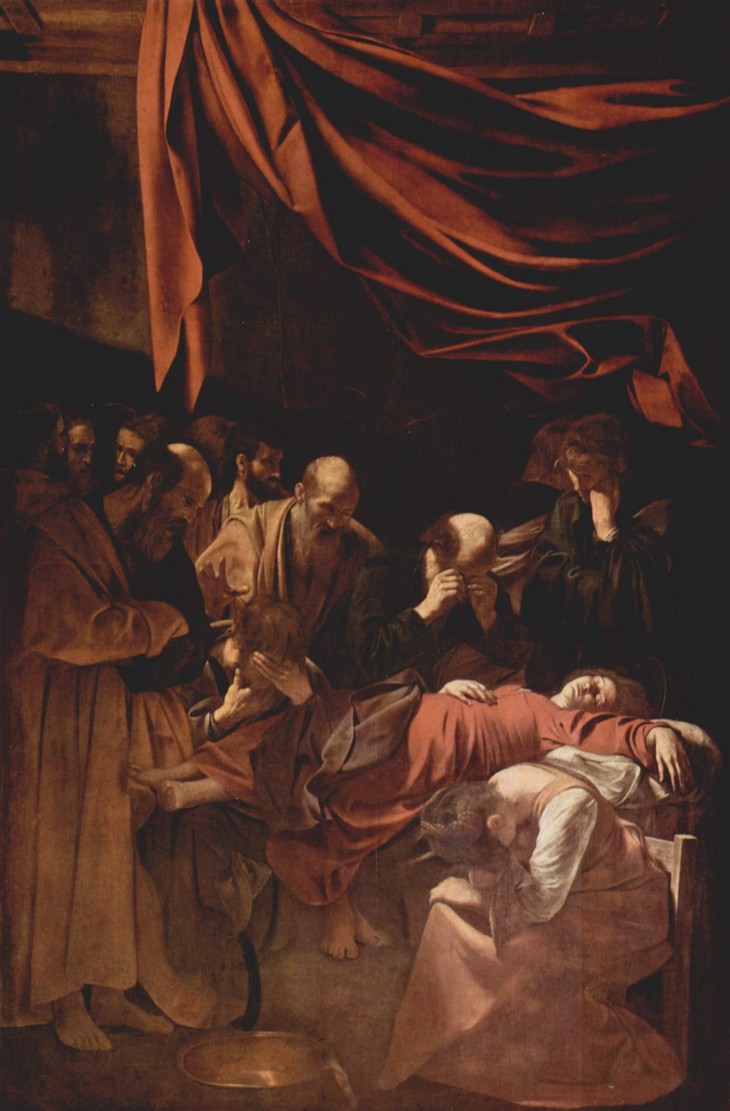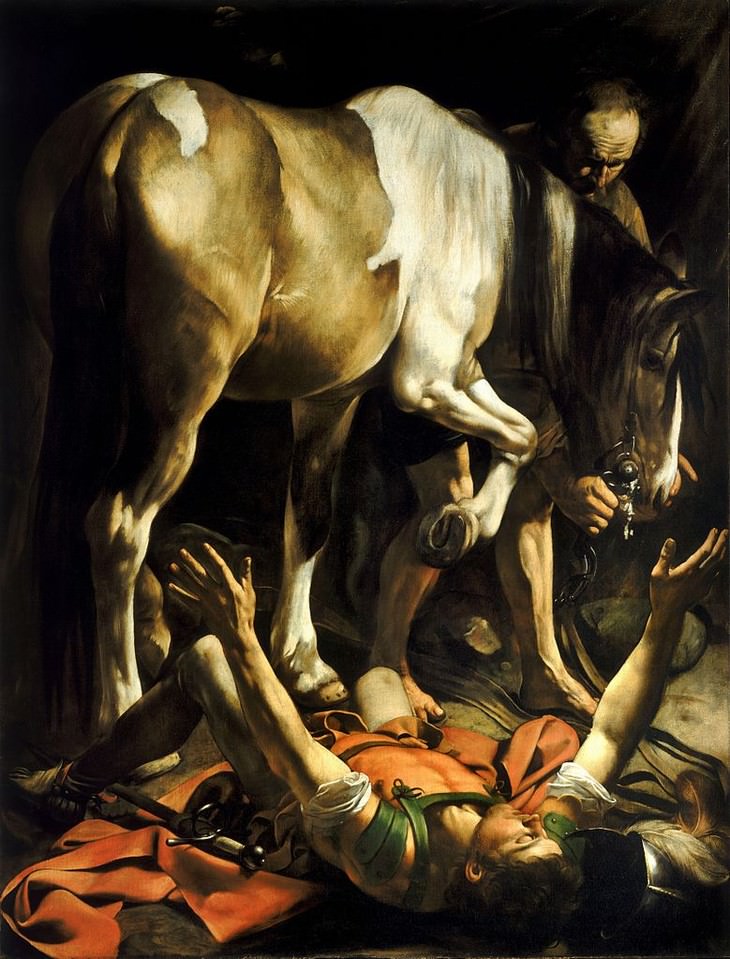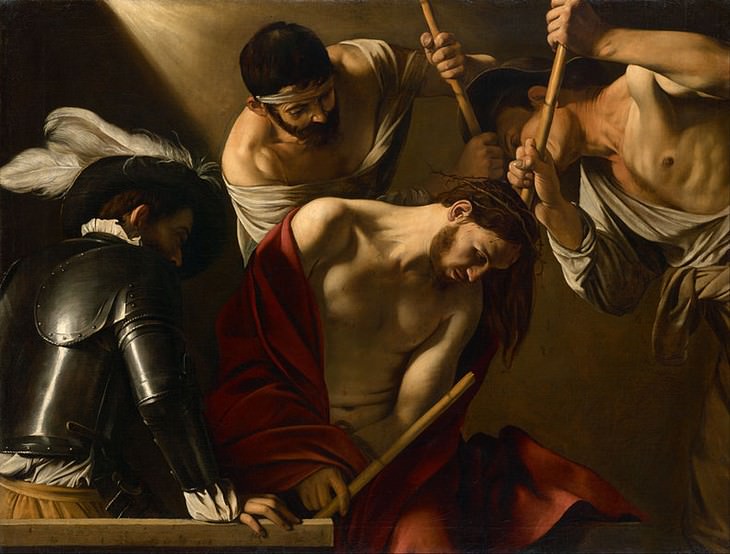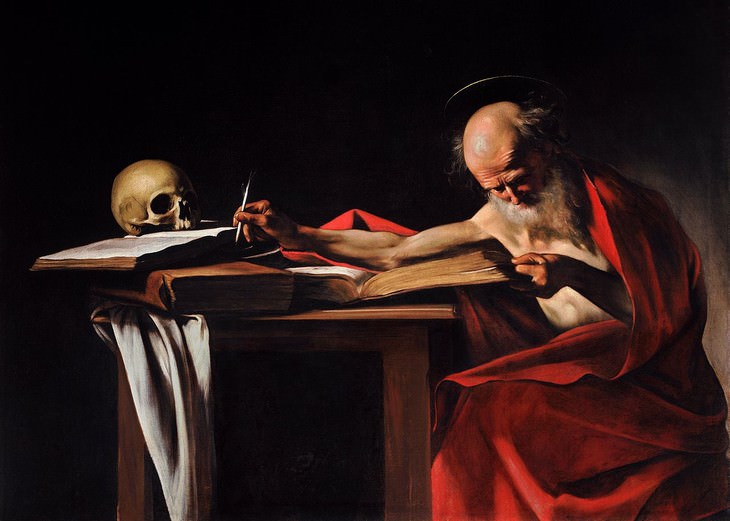Portrait of the Italian painter Michelangelo Merisi da Caravaggio (c. 1621) by Ottavio Leoni
The artist known under the name Caravaggio was born Michele Angelo Merigi (or Amerighi) on September 29, 1571, in Milan, but the family had to flee the city when the soon-to-be-artist was just five years old because the plague had consumed the city.
They moved to the small town of Caravaggio, a name the artist would adopt for himself. At the age of 13, the young Merigi returned to Milan and started an apprenticeship with the artist Simone Peterzano, but already in 1592, Caravaggio appeared in Rome, with no money or home, supposedly fleeing Milan after running into trouble.
Boy with a Basket of Fruit (c.1593)
Just a few months later, Caravaggio was hired to paint fruit and flowers at Giuseppe Cesari's workshop, who was the pope's favorite artist. During this time, he created one of his earliest paintings depicting a boy with a basket of fruit, seen above.
Even in this early painting, we can observe some of the most characteristic elements of Caravaggio's style, namely the extremely lifelike and believable portrayal of details, with even seemingly unimportant details, such as the fruit and leaves being as vivid and realistic as those you see in real life.
Francis of Assisi in Ecstasy (1594)
After a heated argument, Caravaggio left Cesari's workshop, determined to forge his own career with the connections he had made in Rome. During this time, he executed a number of private commissions and started painting Biblical subjects, the most profitable genre in the strictly Catholic Rome. He also painted a number of artworks featuring Rome's everyday citizens, such as musicians and card players, supposedly to practice, as he couldn't afford to hire real models.
Speaking of models, another highly controversial element of Caravaggio's works was the use of regular people and even his acquaintances and lovers in his paintings. For example, the model in the painting of the boy and the basket of fruit is no other than artist Mario Minniti.
Basket of Fruit (c.1599)
A later painting, 'The Death of the Virgin' (1605-1606), depicting the death of the Virgin Mary was rejected by the initial client because Caravaggio used a prostitute as the main model. Such rejections were no tragedy for the artist at that time, however, as a number of other art collectors were ready to scoop up any of his artworks available.
But before we discuss the height of Caravaggio's career and style, let's look at another controversial painting. If you were to guess which one of the two paintings, the one you see above, or the one below, is the more questionable one, you'd likely guess incorrectly, as it's precisely the still life that was deemed controversial, and ultimately, groundbreaking.
This is because the very genre of still life was not invented in Italy at that time. As a matter of fact, 'Basket of Fruit' is considered the first Italian still life.
Judith Beheading Holofernes (c.1598-1599)
As for the visceral depiction of Judith beheading Holofernes, a famous Biblical story of a young woman seducing and killing a Syrian army general, it also has a very interesting history. The painting was rediscovered in 1950 and is now considered one of Caravaggio's most powerful and thought-provoking works. Reportedly, Caravaggio was inspired to recreate the Biblical scene after witnessing the public beheading of Beatrice Cenci, a young Italian noblewoman sentenced to death for murdering her father.
Both this and the following painting are excellent examples of another groundbreaking artistic technique - chiaroscuro, or the use of bold contrasts of light and dark that makes the subject matter of the painting appear more dramatic.

The Calling of Saint Matthew (1599-1600)
Caravaggio invented and mastered this technique, and after the artist's death in 1610, a whole school of Baroque artists called the Caravaggisti, who followed this technique, emerged. The painting above, 'The Calling of Saint Matthew', is one of the most famous of Caravaggio's works, and one that exemplifies this technique the best.
This painting was one of the artist's most successful commissions, and it remained in its original location, the Contarelli Chapel in San Luigi dei Francesi in Rome since it was finished. According to My Modern Met, the painting follows the actual architecture of the chapel's windows, and the stream of sunlight that follows the hand of Christ serves as a powerful metaphor for the divine role of Matthew as an apostle.
The Taking of Christ (c.1602)
Returning to Caravaggio's life, the period between 1600 and 1606 was the peak of his career. Commissions were coming in regularly, the artist painted some of his most iconic artworks, and Caravaggio was deemed the most famous painter in Rome.
The Death of the Virgin (1605-1606)
Even during this time, however, some of his paintings were regarded as masterpieces, whereas others were highly critiqued. Take this painting depicting a famous scene from the Bibile, with Paul falling off his horse as the light of God shines upon him, signifying his conversion.
Initially, the painting was rejected, as it clashed with tradition. Previous Renaissance and Baroque paintings did show horses, but in Caravaggio's artwork, the horse, and not the saint, is highlighed and made the centerpiece of the composition. To make matters even worse - it's the backside of the horse that's at the very front of the picture plane.
Conversion on the Way to Damascus (c.1600-1601)
There is a famous recollection of a church official asking Caravaggio, “Why have you put a horse in the middle, and Saint Paul on the ground?” To which the artist answered, “Because!”, which promted another question, “Is the horse God?”. Caravaggio's answer was, “No, but he stands in God’s light!”.
The Crowning with Thorns (1602-1604)
As you have probably noticed, Caravaggio was an uncompromising character, not afraid, and sometimes, even eager to cause arguments and quarrels, for which the artist was arrested on many occasions. In fact, he frequented the courtroom so often that a great deal of the information we know about him today has been taken from police records.
Fortunately for Caravaggio, his patrons frequently protected him from the consequences of his criminal actions, until the painter committed a crime that couldn't be just covered up, that is. On May 29, 1606, one of his brawls ended tragically - a young man named Ranuccio Tomassoni was killed by Caravaggio. The circumstances of the crime remain unknown, but many believe the murder was unintentional.
Saint Jerome in His Study (1605-1606)
As a result, Caravaggio was sentenced to death, but he managed to flee to Naples as an outlaw. For the remainder of his life, which ended at the age of 39, the artist traveled to Sicily, Malta, and Naples, and made several more important commissions. However, his intention was to wait out for a pardon and return to Rome, and an opportunity to receive such a pardon came up in 1610 by Cardinal Scipione.
Armed with three of his final paintings meant as gifts for the cardinal, Caravaggio boarded a ship in the summer of 1610, but he would never reach Rome. What really happened remains a matter of great debate, but it is certain that the artist was robbed of his paintings, injured, and died from sepsis and fever in July of 1610 in Porto Ercole, Tuscany.
Caravaggio's turbulent life had ended, and the circumstances of his death are shrouded in mystery. What's clear is that the Italian painter remains one of the greatest artists in the history of Europe, whose accomplishments would fuel the development of art for centuries onwards, and whose works continue impressing viewers from all over the world even today.

